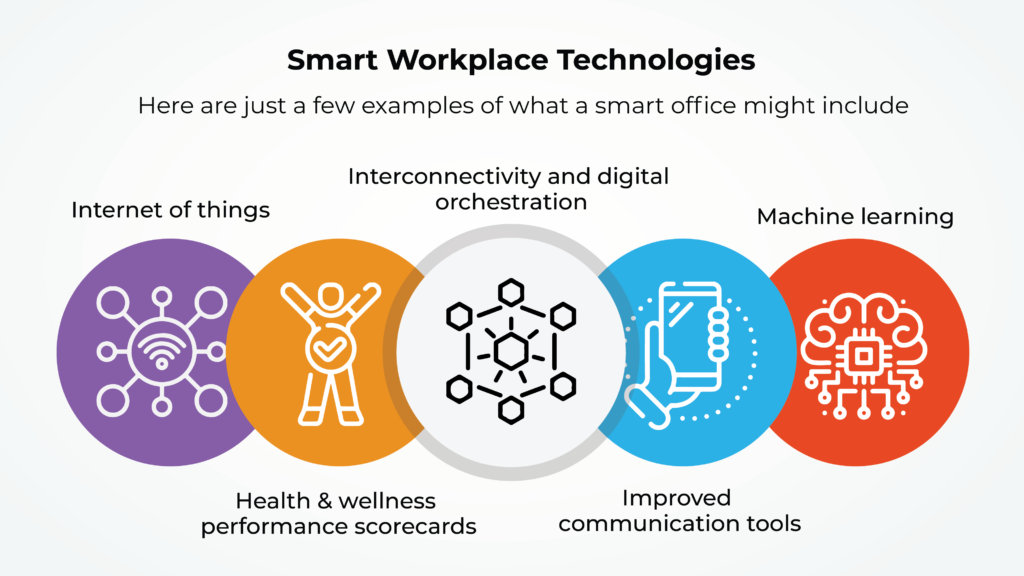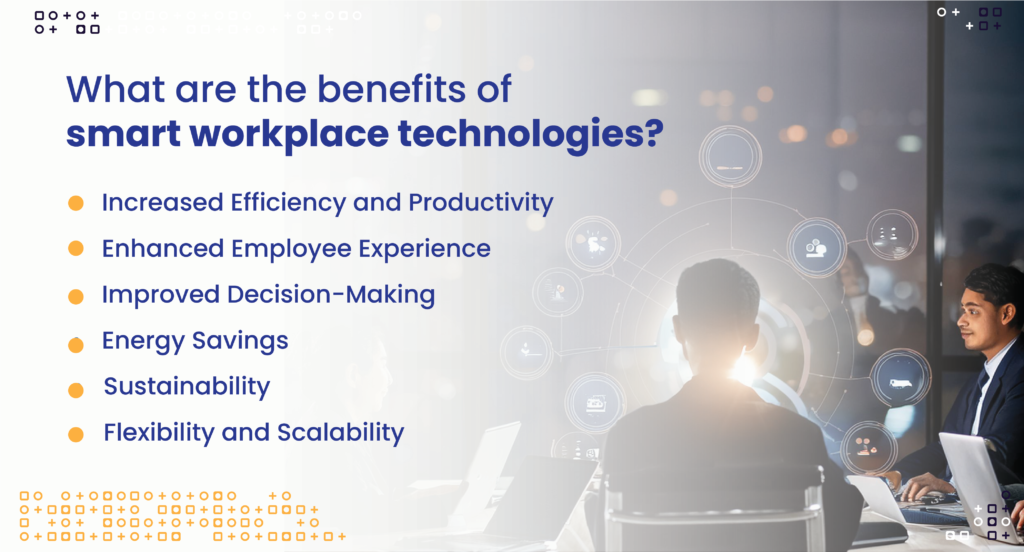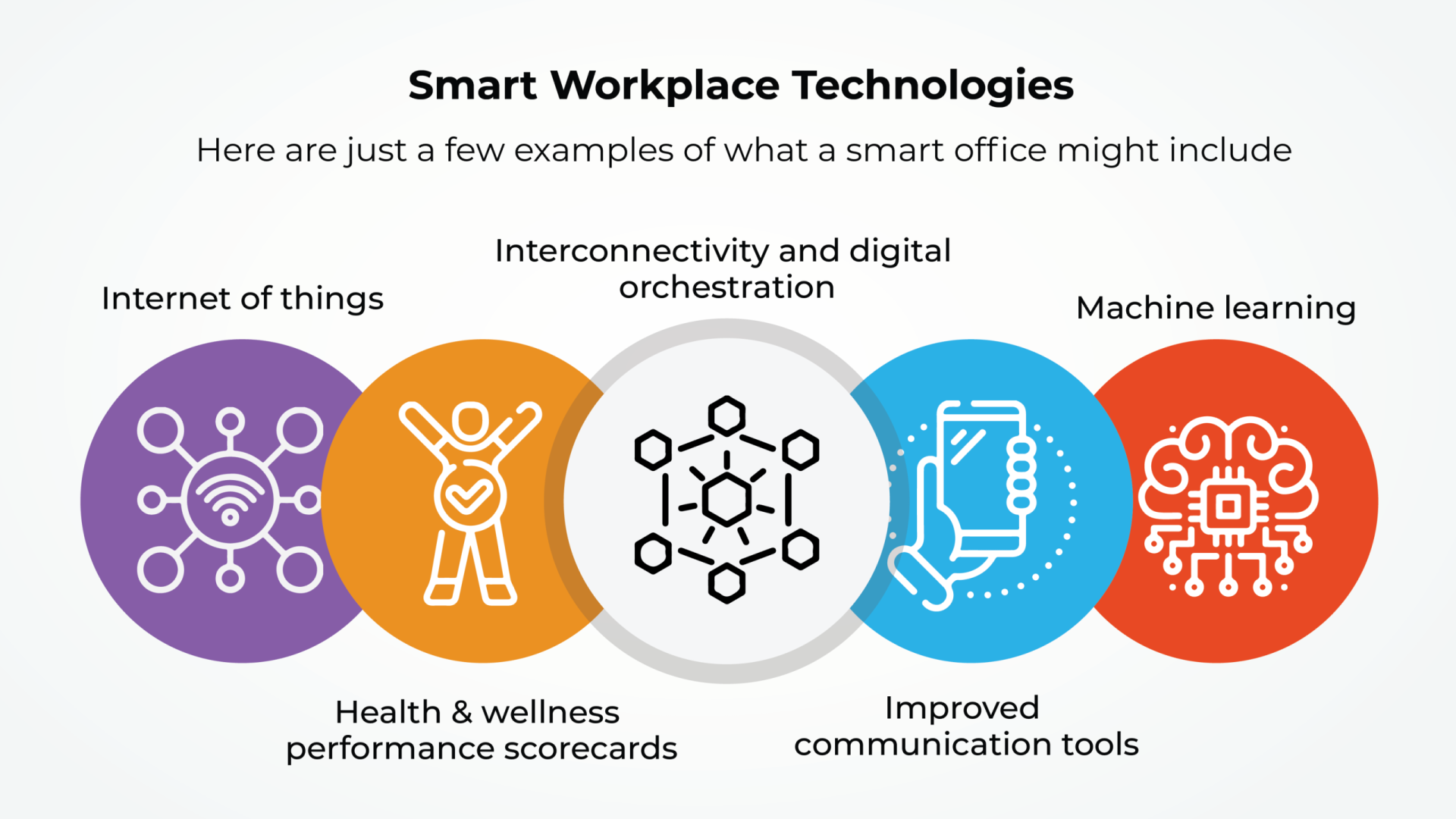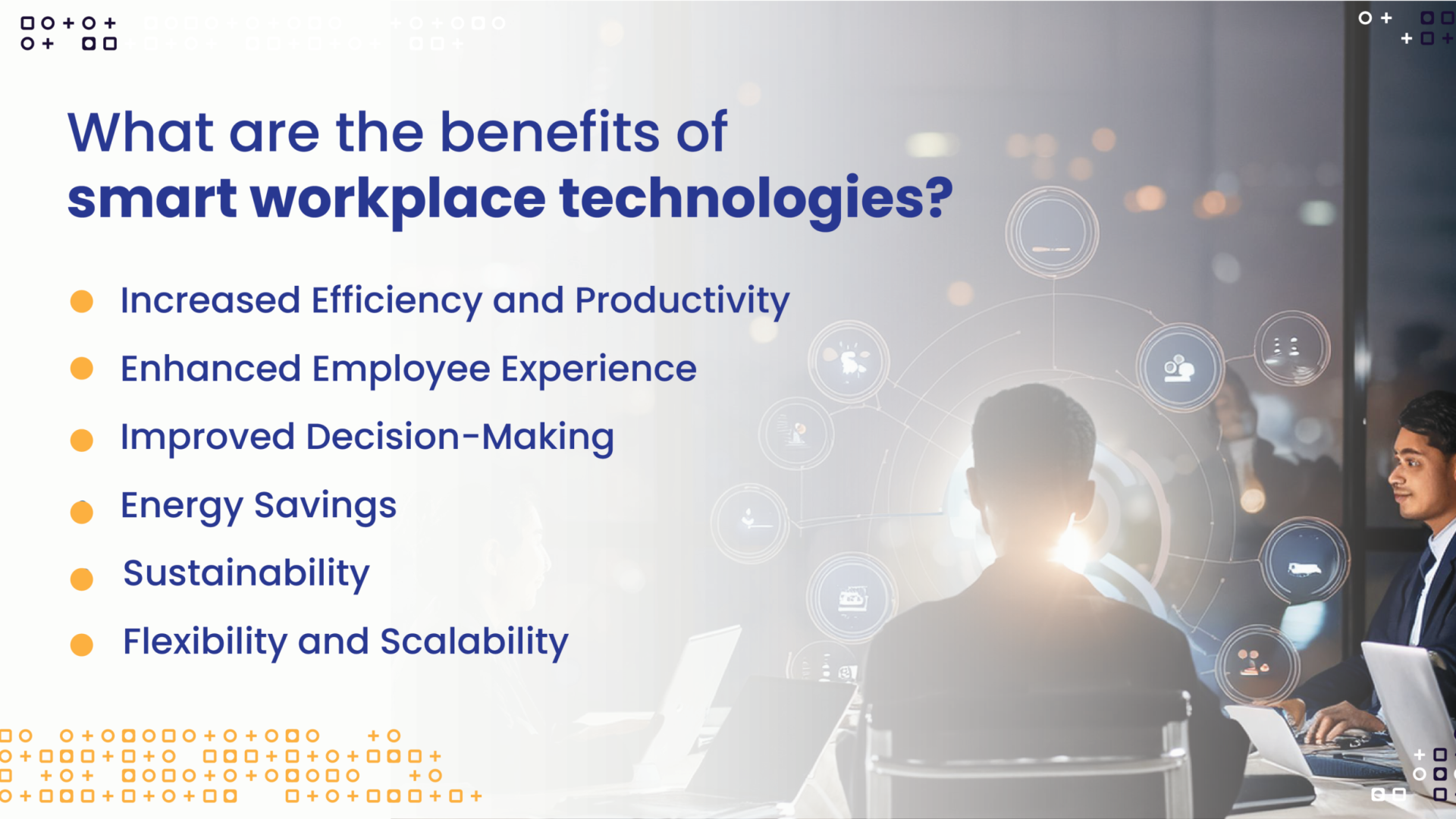


Digital technology is reimagining the way workplaces operate and people do business.
Developments such as the internet of things (IoT) present a variety of diverse opportunities across many industries and are also transforming modern workplaces and service operations.
This shift is evident in the trend toward creating smart office — in which technology is used to make the physical work environment intelligent, adaptable to business objectives, experiential, and oriented to health & wellness standards.
What is a smart workplace?
A smart workplace or responsive workplace is an office space that uses technology to adjust to the varying needs of the people using it.
Post the pandemic, most organizations are also taking pre-emptive steps to ensure that the workplaces foster health and well-being of the occupants by adhering to Indoor air, indoor environment, surface hygiene, water quality standards which can be tracked digitally against established benchmarks.
This not only facilitates ESG and sustainability compliance mission of the organization but also elevate the employer equity and help in retaining and attracting talent in the business.
“Responsive” means that every aspect of the workplace, from collaborative tools to the built space, is able to respond to an individual’s needs and context.
Why Do Organizations need a Smart Workplace?
Organisations understand that employees – who have largely enjoyed the work-from-home experience – have higher expectations of what their office should offer. The smart workplace is seen as dynamic, diverse, adaptable, agile, collaborative and supportive.
Leaders also want the smart workplace to facilitate collaboration, productivity and efficiency. And having quality data will help to shape the future of work with data led decision-making.
The idea behind the responsive workplace is to orchestrate people, services, processes, business outcomes, and most importantly, to administer these operations under one common digital system.
By doing so, businesses can get more out of their workplaces, assets, support services while keeping employees happier and productive as well as analyse a vast amount of workplace data on these parameters to make more informed business decisions.

Smart workplace technologies
In order to track, monitor, and digitise the above aspects of a workplace, a smart workplace leverages various technologies like:
Internet of things (IoT):
IoT is essential for a smart workplace, IoT technology helps in enhancing efficiency, productivity, and employee well-being through automation and personalized environments.
It improves safety and security, enables data-driven decision-making, and supports sustainability by optimizing resource use.
Machine learning:
Machine learning, a subset of artificial intelligence, involves training algorithms to learn from and make predictions based on data.
It is vital for a smart workplace as it enables continuous improvement and innovation by uncovering patterns and trends within workplace data.
Interconnectivity and digital orchestration:
Interconnectivity and digital orchestration in a smart workplace, involves seamlessly linking of various digital systems and devices to work together harmoniously.
This interconnectivity enables real-time data exchange and provides a more coordinated & orchestrated automation system for workplace mangers.
It supports smooth operations, and improves decision-making through integrated insights that provides correlation between various metrics tracked by different systems, fostering a digital ecosystem.
Improved collaboration tools:
Smart workplaces also feature technologies that improve human-to-human communication for both in-person and remote employees.
These tools can include digital whiteboards for easily syncing notes and facilitating brainstorming sessions, improved conference rooms and collaboration channels.
Health & wellness performance scorecards:
Health and wellness performance in a smart workplace is an important necessity than a luxury, in the current context.
Realtime displays in public areas and administration dashboards on key workplace environment and wellness performance metrics allows preventive and proactive remedial actions which in turn can provide a secure shield of health security for employees, occupants, and visitors.

What are the benefits of smart workplace technologies?
Smart workplace technologies offer a plethora of benefits for organizations:
Increased Efficiency and Productivity: Automation of routine tasks allows employees to focus on more valuable work, while optimized workflows reduce the time and effort spent on administrative tasks.
Enhanced Employee Experience: Personalized workplaces adjust to individual preferences, enhancing comfort and productivity. Improved communication and collaboration tools streamline teamwork, making it easier for employees to connect and positively impact employee experience.
Improved Decision-Making: Real-time data and analytics provide actionable insights that inform strategic decisions. Predictive analytics help anticipate and address issues before they escalate, leading to more proactive and informed management.
Energy Savings: Energy-efficient systems and automated resource management reduce operational costs by minimizing waste and optimizing resource use. Predictive maintenance strategies further cut expenses by preventing costly downtime and repairs.
For example, research highlighted by Timbergrove, which specializes in IoT and automation solutions, suggests that smart buildings utilizing technologies such as temperature sensors, smart thermostats and accounting sensors for human occupation could cut energy costs by 15 to 25 percent.
Sustainability: Smart workplace technologies optimize resource use, reducing waste and environmental impact. Energy management systems lower the workplace’s carbon footprint, contributing to a more sustainable operation.
Flexibility and Scalability: Cloud-based solutions and interconnected devices allow for easy scaling and adaptation to changing business needs. Remote work support enables flexible working arrangements, making it easier to manage a dynamic workforce.
In conclusion
When you’re conceptualizing a smart workplace, start by thinking about the incremental steps that can radically improve employee happiness, elevate health & wellbeing, improve productivity and service and cost efficiency in the business.
Platform
Resources
Company
Solutions
Industry
Function
Contact us
Feel free to contact us !
Copyright © 2024-2025 Caleedo | Powered By PAS Digital